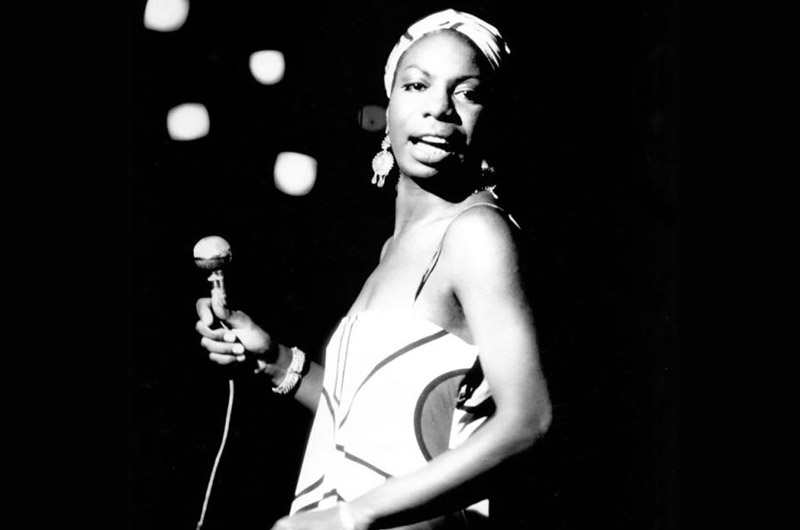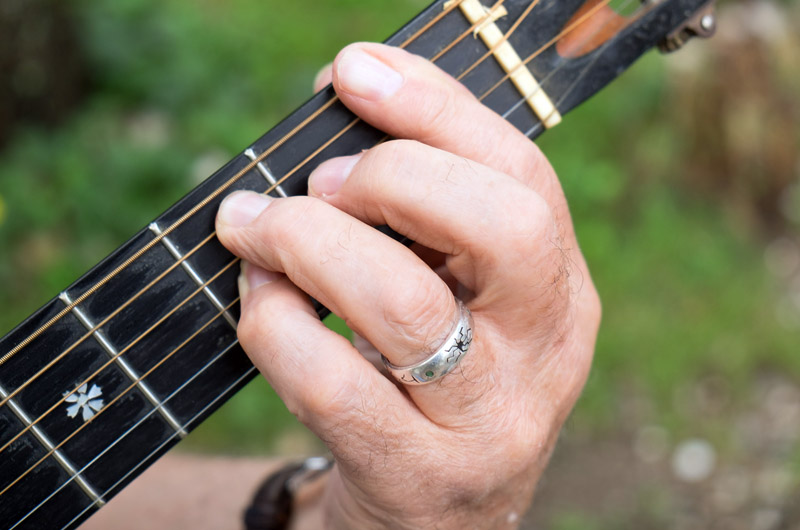Alvin Schackman took the stage at the Bucks County Playhouse without any expectations. He set up his amp, tuned his guitar and waited for Nina Simone to take the stage.
It was 1957 in New Hope, Pa. Mutual friends thought they’d enjoy playing together, but the musicians had never met.
“She came back on the stage and never looked at me, never told me what she was going to play, no keys, nothing. But we both had perfect pitch,” Mr. Schackman remembered. “She started in on a Bach type fugue, an introduction to what turned out eventually to be Little Girl Blue. I heard where she was going and I joined in with an added part to this invention, and now we’re in a fugue. And right at the height of it with all of this going on, she starts the song, this love ballad that had nothing to do with the energy. I’ve never heard anyone be able to do anything like that. Miles Davis once said, how does she do that? And then she looked up. That was the beginning of our ride together.”
And it turned out to be a long ride. Mr. Schackman was Ms. Simone’s guitarist from 1957 to 2000. Her life and work is now the subject of a new Netflix documentary, What Happened, Miss Simone?

On Tuesday, August 25, the film will be screened at the Martha’s Vineyard Film Center. Mr. Schackman, a longtime Vineyard resident, along with the film’s director Liz Garbus will be on hand to talk about the film and the life of Nina Simone.
“She became like my sister,” Mr. Schackman said in an interview done at friend’s house in Vineyard Haven. “We always had this wonderful, quiet, telepathic relationship when we were alone, just the two of us. The telepathy when we played was uncanny. I never experienced anything like that, that’s what kept me with her.”
His time with Ms. Simone represents a significant part of his musical career and personal life, but throughout the years Mr. Schackman has always returned to the Vineyard for inspiration. He first visited the Island in the 1960s to help high school friends build a house up on Christiantown Road.
“It was wild in the way it isn’t anymore, it was wonderful,” Mr. Schackman said.
He began to live here full-time in 1990, and when he isn’t touring he lives off Edgartown-Vineyard Haven Road. In addition to playing with Ms. Simone, he has played with the Isley Brothers, The Drifters, Dinah Washington, Harry Belafonte and Baba Olatunji to name just a few. Mr. Schackman said that on the Vineyard he has also met many “world class musicians.”
Jeremy Berlin, Eric Johnson, John Alaimo, Michael Tinus, Steven Maxner, the list of musicians he calls friends and coconspirators is a long one. But no one connected with him like Maynard Silva.
“Maynard is beyond category,” Mr. Schackman said. “We met when I first came back to the Vineyard and had wonderful sessions together, it was that one moment and I met my brother. And then we didn’t see each other for a number of years which I’m really sad about. But then we just exploded.”
Together they worked on the blues, and had plans for an album together and to travel the British Isles. When Mr. Silva died in 2008, Mr. Schackman brought Mr. Silva’s Telecaster guitar with him on a world tour.
“In a sense I took Maynard out to visit the world,” he said.
Mr. Schackman grew up on a farm in the Catskills, where he dabbled with the ukulele. When he was 11 or so, his father gave him a big guitar with jewels on it after a road trip to Cleveland.
“He must have bought it for $10 in a pawn shop,” Mr. Schackman said.
The family moved to Brooklyn, N.Y. after Mr. Schackman’s father was relocated while working for the defense department.
“And it was there that my mom took me into the corner music store,” he said. “We bought a guitar, an arch top f-hole Harmony. It was sunburst with red.”
The salesman was Sam Ash, the music store founder.
Mr. Ash recommended he study with Rector Bailey, a black guitarist who lived below Fulton Street in what is now the Bedford-Stuyvesant neighborhood of Brooklyn. Mr. Bailey taught almost every Brooklyn raised musician, Mr. Schackman said.
“He was my mentor, my guru, and he was Nat Cole’s first guitarist but he wouldn’t leave New York,” he said. “By the time I was 15 I was sitting in on his band and visiting all the clubs down on Fulton Street.”
Mr. Schackman was on the road by the time he graduated from high school.
“I went through the segregated south with a black band,” he said, recounting a story of getting shot at in Savannah, Ga. and getting run out of a VFW for playing in a mixed race band.
While working on the documentary about Nina Simone, Mr. Schackman said he was surprised by her global impact.
“It astonished me to suddenly realize the extent and the depth of the impact that Nina Simone made on music world wide because she was my Nina, my Eunice,” he said, referring to Ms. Simone’s given name Eunice Waymon. “This wave of Nina Simone is enveloping the planet and it was astounding to me. To me it as an affirmation of why I spent so much of my career with her.”
Ms. Simone was known for her volatile mood swings, later being diagnosed with bipolar disease, and Mr. Schackman said he and the band would have to protect her from herself at times. Ms. Simone eventually moved to France, where she died from breast cancer in 2003.
Ms. Simone always tried to infuse classical music into her repertoire (her dream was to perform at Carnegie Hall, a dream she later fulfilled) and the two would go into classical improvisation at times. But there were also times when she would return to her southern roots.
“She would become Eunice from red dirt North Carolina and get into some gut blues,” he said. “She had total command.”
The two were also involved in the Civil Rights Movement, aligning themselves with black militant groups. They flew down to Montgomery, Al. in March 1965 to perform for the marchers walking from Selma. Organized by Harry Belafonte at the request of Dr. Martin Luther King, Jr., Ms. Simone and Mr. Schackman performed on a makeshift stage made of coffins.
He still recalls the first time Ms. Simone and Dr. King met.
“He’s standing there and she walks up to him, and he puts out his hand to shake her hand and is very warm, ‘Hi my sister!” Mr. Shackman recalled. “But before she would shake his hand, she stood there and said, ‘I ain’t nonviolent.’ And he said, ‘that’s okay sister, you don’t have to be, you don’t have to be.’ Then she shook his hand.”
Mr. Schackman said there is still plenty of work to be done. He has given talks about Ms. Simone and her history with the movement and hopes to keep inspiring students to participate.
“It ain’t done yet, that’s what she would say,” he said. “Her term was United Snakes of America, and the snakes are still out there and there’s still work to do. Mississippi, Ferguson. There’s still work to do, it’s just changed its face a little bit. Racism knows how to do that.”
What Happened, Miss Simone? screens at 7:30 p.m. on Tuesday, August 25, at the Martha’s Vineyard Film Center. Al Schackman and director Liz Garbus will be on hand for a Q&A. Visit mvfilmsociety.com.





Comments (2)
Comments
Comment policy »